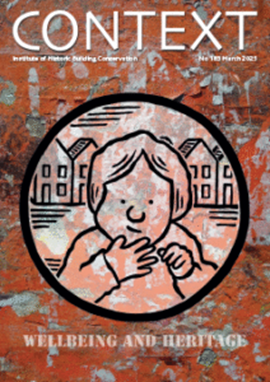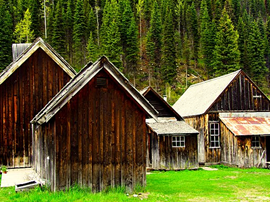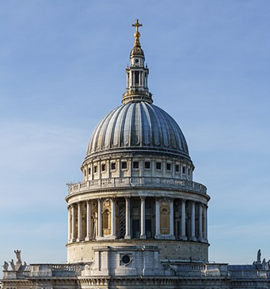Journal of Historic Buildings and Places 2024
The content of the Journal of Historic Buildings and Places tends to reflect its wide statutory remit, covering buildings of all ages and types. This issue includes an insightful review by Colin Thom, director of the Survey of London (see page 20 of this issue of Context) on the survey’s creation; its past activities within London County Council; its survival after the demise of the GLC; its present home at the Bartlett School of Architecture, University College London; and its future direction and activities, including how to bring its valuable work to a wider audience.
Considering its ubiquity, there should perhaps be a wide audience for the understanding of the contribution of early Victorian Tudor gothic to domestic architecture. This is the title of a tellingly illustrated article by Anthony Jennings, who discusses, over nearly 30 pages, the evolution from the medieval house to a domestic revival through to the present day. This often encountered but imperfectly understood architectural style provided long-lasting templates from the 1830s and 40s, with implications for the English house having influence elsewhere. The author also discusses the perfection of gothic and the influence of a range of pattern books that emerged between 1831 and 1836.
In this issue, Patrick Newberry, an authority on the architecture of Cornwall, discusses at length and illustrates the work of James Piers St Aubyn (1815-95). St Aubyn was deemed in his time to be a successful architect with nearly 400 buildings to his credit, but he was vilified in the 20th century for adopting a heavy-handed approach to restoration and the repair of historic churches.
Reflecting the wide remit of Historic Buildings and Places, the journal also contains an inquiry by Victoria Watson, co-convenor of the Design Practices Research Group at the University of Westminster, into the architectural identity of Herzog and de Meuron, with reference to Tate Modern, London, and the Museum of the Twentieth Century, Berlin, and the practice being notable for having no signature style.
This article originally appeared in the Institute of Historic Building Conservation’s (IHBC’s) Context 181, published in September 2024.
--Institute of Historic Building Conservation
Related articles on Designing Buildings Conservation.
IHBC NewsBlog
IHBC Context 183 Wellbeing and Heritage published
The issue explores issues at the intersection of heritage and wellbeing.
SAVE celebrates 50 years of campaigning 1975-2025
SAVE Britain’s Heritage has announced events across the country to celebrate bringing new life to remarkable buildings.
IHBC Annual School 2025 - Shrewsbury 12-14 June
Themed Heritage in Context – Value: Plan: Change, join in-person or online.
200th Anniversary Celebration of the Modern Railway Planned
The Stockton & Darlington Railway opened on September 27, 1825.
Competence Framework Launched for Sustainability in the Built Environment
The Construction Industry Council (CIC) and the Edge have jointly published the framework.
Historic England Launches Wellbeing Strategy for Heritage
Whether through visiting, volunteering, learning or creative practice, engaging with heritage can strengthen confidence, resilience, hope and social connections.
National Trust for Canada’s Review of 2024
Great Saves & Worst Losses Highlighted
IHBC's SelfStarter Website Undergoes Refresh
New updates and resources for emerging conservation professionals.
‘Behind the Scenes’ podcast on St. Pauls Cathedral Published
Experience the inside track on one of the world’s best known places of worship and visitor attractions.
National Audit Office (NAO) says Government building maintenance backlog is at least £49 billion
The public spending watchdog will need to consider the best way to manage its assets to bring property condition to a satisfactory level.
















